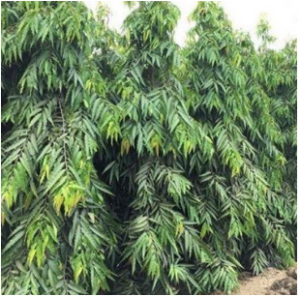Cambridge Global Learning’s SDG Initiatives: The Case for Planting Trees in or around schools

Most of us recognize the beauty of trees and their many other values. They help protect our waterways by intercepting storm water, stabilizing soil and saving soil nutrients that would otherwise wash into drains. Trees help moderate temperature and muffle noise as well as providing shade. They even help improve air quality by absorbing some airborne compounds that could be harmful to us, and by giving off oxygen. Spending time around trees and in nature therefore also makes us healthier and may even improve students’ academic goals.
A tree planting program is a learning opportunity to get kids involved in the environment and conservation of our natural resources. Recent scientific studies suggest students are better able to concentrate, complete tasks, and follow directions after playing in natural settings. School Tree Planting projects connect students to the benefits of trees and foster environmental stewardship. Tree planting is a great way to increase interest in their local environment and contribute to student morale, well-being & the achievement of social responsibility.
When students plant trees, they can see for themselves the structure of trees, learn what they need and how they grow. Teachers can use the planting process to discuss the benefits trees provide, while including many subjects that their classes are studying. As trees mature, the trees can be a continuing, personalized way of relating what they have learned in books or on-line to visible, living examples. Students become aware that they can play a role in protecting the environment through personal involvement. Ultimately, it is hoped that the experience will help them make intelligent decisions about conservation and use of valuable natural resources.
Therefore, building awareness and appreciation for trees is important, particularly among urban schools. Incorporating (fruit, nut, and oil) trees in or around school grounds expands the knowledge of students. Tree planting provides a sense of responsibility – learning for better nurturing of the environment. A model of action, whereby schools can develop situations and positive outcomes in learning performance, food security, nutrition, rural development, local economy and lifestyle practices and habits.
These can include use of food waste from the canteen to make compost, how to graft fruit trees, and how to plant and care for trees. The benefits of trees go beyond just food security and nutrition. Evergreen trees can also act as windbreaks, dust and noise barriers while contributing to a better understanding of, and improvement of biodiversity.

A wall of Ashoka trees forming a noise barrier

